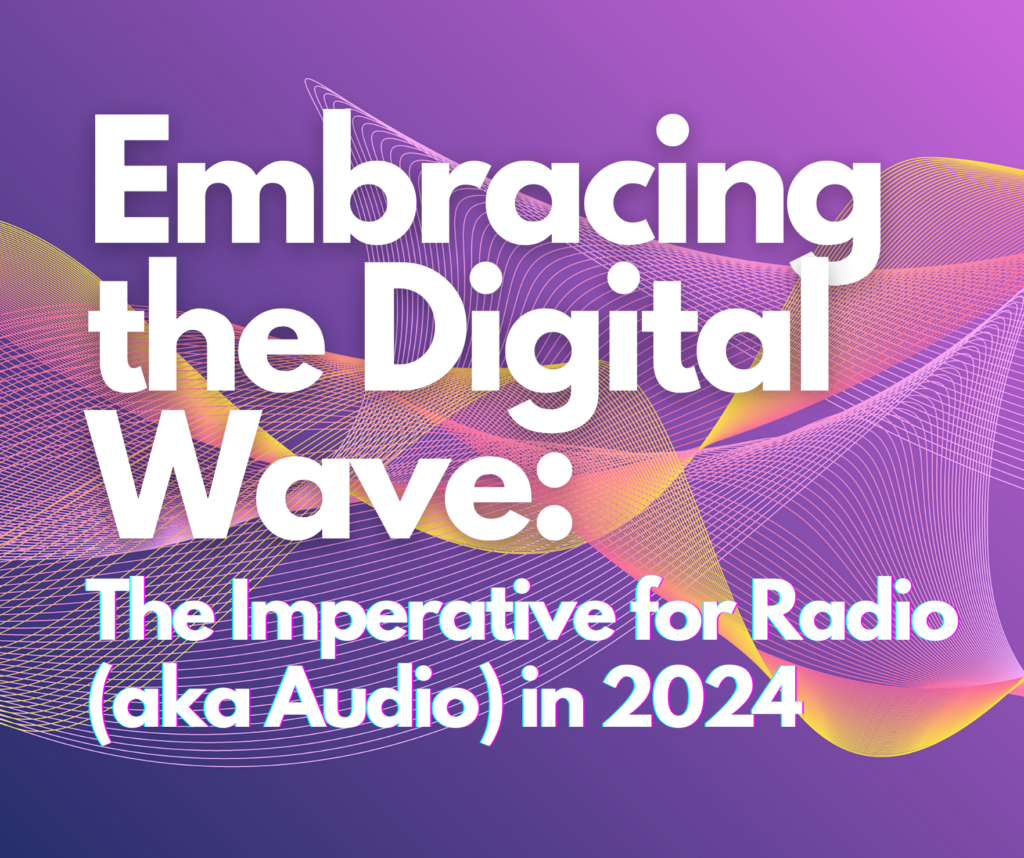In the dynamic landscape of radio, adapting to technological advancements is crucial for staying relevant and reaching wider audiences. In Mike Henry’s most recent blog, “2024 – The Tipping Point from Radio to Digital Audio,” we gained an understanding that more than ever, now is the time that digital platforms should be at the forefront of audio content distribution. This shift aligns with changing consumer preferences and opens new avenues for engagement and growth.
 Accessibility and Convenience
Accessibility and Convenience
Digital distribution brings unmatched accessibility and convenience to listeners. In an era where on-the-go lifestyles dominate, people crave content at their fingertips. Through digital platforms, radio stations can cater to this demand, allowing audiences to enjoy their favorite shows anytime, anywhere. Whether it’s commuting, exercising, or relaxing at home, digital distribution ensures that radio is seamlessly integrated into people’s daily lives.
Diversifying Content Formats
Digital platforms provide the flexibility to diversify content formats beyond traditional radio shows. Podcasts, special features, and exclusive digital series offer radio the opportunity to explore innovative storytelling and engage with diverse demographics. By embracing a variety of content formats, radio stations can capture the attention of a broader audience and cater to the evolving preferences of today’s listeners.
Enhanced Interactivity and Engagement
Digital distribution enables a higher level of interactivity and engagement. Social media integration, live chats, and interactive features create a more immersive experience for listeners. Not to mention, the idea of enhanced engagement and connection creates a community of like-minded and loyal listeners. Radio can leverage these tools to build a community around their content, fostering discussions, and establishing a stronger connection with the audience. As we’ve all experienced in the years leading up to this point, it’s not just about broadcasting; it’s about building a digital ecosystem that enhances the overall listening experience.
Synergizing Social Media and Audio Content
Recognizing the symbiotic relationship between social media and audio content is crucial for a cohesive and impactful presence. In 2024, broadcasters should actively integrate social media platforms to amplify their messaging and engage with audiences on multiple levels. Social media thrives on visual content, and radio can leverage this by creating visually compelling snippets or graphics that accompany audio segments. Whether it’s short video clips, infographics, or teaser images, incorporating visual elements enhances the overall storytelling experience and captivates the attention of a broader audience. Lastly, social media provides a real-time avenue for radio to connect with its audience on digital. Hosting Q&A sessions, live engagement opportunities, and responding to listener comments foster a sense of community and immediacy. By synchronizing social media engagement with on-air content, radio stations can create a seamless and interactive experience for the audience.
Monetization Opportunities
Digital platforms offer diverse avenues for monetization, ensuring the sustainability of radio. From advertising and sponsorships to premium subscriptions, pay walls and merchandise sales, the digital world provides a multitude of revenue streams. Broadcasters can explore innovative monetization models that align with the preferences of their audience while maintaining the integrity of their content.
Many of these points are not groundbreaking as Paragon has been encouraging clients to follow these protocols in the past. With the recent stats for digital audio consumption, the time to put these concepts into action is now. The digital path is paved with opportunities and embracing digital as a primary distribution point not only aligns with the changing landscape but positions radio as a modern, forward-thinking, adaptive force. By prioritizing accessibility, diversifying content formats, enhancing interactivity, expanding reach, and exploring monetization opportunities, radio can thrive in the digital era and continue to be a powerful voice in the ever-evolving media landscape.
More about Michelle Conrad.

Leave A Comment